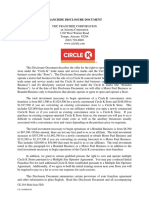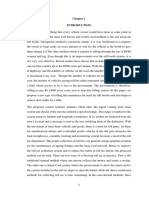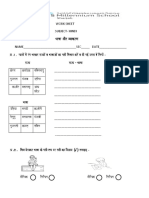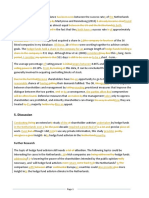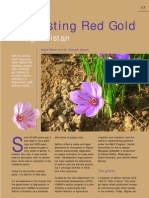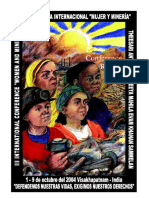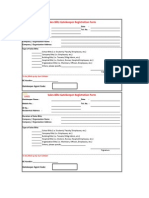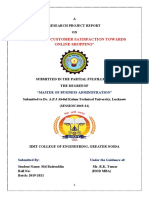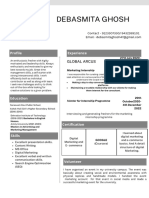Professional Documents
Culture Documents
CBSE Class 7 History Worksheets (11) - Towns, Traders and Craftspersons
CBSE Class 7 History Worksheets (11) - Towns, Traders and Craftspersons
Uploaded by
rachana0 ratings0% found this document useful (0 votes)
4K views5 pagesThe document appears to be a set of objective questions from chapters in a history textbook covering various topics related to towns, traders, craftspeople, tribes, cultural regions, and 18th century political formations in India. Specifically, it asks questions about the Chola empire capital city and a famous temple there, trade routes and goods, tribal communities, the development of regional cultures like in Kerala and Rajasthan, and the establishment of states in northern India during this time period by rulers like the Marathas and Sikhs.
Original Description:
Original Title
CBSE Class 7 History Worksheets (11) - Towns, Traders And Craftspersons
Copyright
© © All Rights Reserved
Available Formats
PDF, TXT or read online from Scribd
Share this document
Did you find this document useful?
Is this content inappropriate?
Report this DocumentThe document appears to be a set of objective questions from chapters in a history textbook covering various topics related to towns, traders, craftspeople, tribes, cultural regions, and 18th century political formations in India. Specifically, it asks questions about the Chola empire capital city and a famous temple there, trade routes and goods, tribal communities, the development of regional cultures like in Kerala and Rajasthan, and the establishment of states in northern India during this time period by rulers like the Marathas and Sikhs.
Copyright:
© All Rights Reserved
Available Formats
Download as PDF, TXT or read online from Scribd
Download as pdf or txt
0 ratings0% found this document useful (0 votes)
4K views5 pagesCBSE Class 7 History Worksheets (11) - Towns, Traders and Craftspersons
CBSE Class 7 History Worksheets (11) - Towns, Traders and Craftspersons
Uploaded by
rachanaThe document appears to be a set of objective questions from chapters in a history textbook covering various topics related to towns, traders, craftspeople, tribes, cultural regions, and 18th century political formations in India. Specifically, it asks questions about the Chola empire capital city and a famous temple there, trade routes and goods, tribal communities, the development of regional cultures like in Kerala and Rajasthan, and the establishment of states in northern India during this time period by rulers like the Marathas and Sikhs.
Copyright:
© All Rights Reserved
Available Formats
Download as PDF, TXT or read online from Scribd
Download as pdf or txt
You are on page 1of 5
CLASS VII HISTORY
CHAPTER 6 TOWNS, TRADERS AND CRAFTSPERSONS
OBJECTIVE QUESTIONS :
Q1.The Capital city of the Cholas was _________
Q2. Name the river that flowed through this capital city.___________
Q3.a)Name the temple present in this city. b) Who built this temple ?
a) b)
Q4. Who was the architect of this temple ? ________________________
Q5. Which diety is located in this temple ? _______________________
Q6. Kings used to hold court in the ______________ (pavilions)
Q7. Other name of sculptors who made bronze idols ____________________
Q8. In which place did they make these idols ? ___________________
Q9. Give an example of a Temple town in :-
a) Madhya Pradesh : _____________________ b) Gujarat : _____________________
c) Tamil Nadu : _________________________ d) Andhra Pradesh : _______________
Q10. Chola bronze statues were made using the ___________ technique.
Q11. Bronze is an alloy of _________ and __________
Q12.Give an example of pilgrimage centres in :
a) Uttar Pradesh : ______________________ b) Tamil Nadu : ________________________
c) Rajasthan : _______________________
Q13. Which city was the capital of the Chauhan kings and later became the suba
headquarters of the Mughals ? ______________________________
Q14. Which city provides an excellent example of religious co-existence ? ____________
Q15.Name the sufi saint who settled in this city and attracted devotees from all
creeds ? __________________________________________________________
Q16. Instead of collecting the taxes, sometimes the ‘rights’ were given to the temples.
Q17. Name any 5 items on the sale of which taxes were imposed on the traders ?
a) _____________ b) ______________ c) ______________ d) _____________ e) ________
Q18. The association or group formed especially by the horse traders, who had to
travel through many kingdoms to sell/trade was called ______________
Q19.-Name 2 examples of such associations : a) _________ b) ___________
Q20. Name 2 items that the Indian traders bought from Africa. a) ______ b) ________
Q21. Name 4 items that the Indian traders bought from S-E Asia and China.
a) ___________ b) ___________ c) _______________________ d) _______________
Q22. Name the 4 spices of India that became a part of European cooking.
a) __________________ b) _________________ c) _________________ d) __________
Q23. Name 2 communities of the smiths, masons and carpenters.
a) __________________________ b) ____________________________
Q24. Name the centre of silk in India during the 18th century, which became the
capital of Bengal.
Q25. Name the river basin on which Hampi is located. ________________________________
Q26. Name the Portuguese traveler who visited Hampi ? _________________________________
Q27. Who were the agents of the European traders in India ? __________________________
Q28.Name the stone Chariot temple at Hampi.. ______________________________
Q29. Which festival was celebrated at Hampi ? _______________________________
Q30. An Emporium is a place _____________________________________________________
____________________________________________________________________________
Q31. Hundi is a note ____________________________________________________________
____________________________________________________________________________
Q32. Present name of Cambay is ______________________
Q33. Name the 3 cities that were the gateway of western trade under the Mughals.
a) ________________________ b) _____________________ c) _____________________
Q34. Name the English Chronicler who visited Surat and wrote an account of this
port.
Q35. Name a famous fish port town. _______________________
Q36. On which river’s delta is it located. __________________________
Q37. Factor means ________________________________________________________
Q38. Name 2 Indians who owned a large number of ships at that time ?
a) _________________________________________ b) ______________________________
Q39. Black Towns were the towns especially made for the Indian traders and
craftspersons to live within the new cities of Bombay, Calcutta and Madras.
Q40. Special residences were made in these cities where the Europeans settlements
were constructed. Example –a) Fort St. William of Calcutta b) Fort St.George of
Madras.
CHAPTER 7 Tribes, Nomads and Settled Communities
Q1. The new castes emerging with in varnas were called jatis.
Q2. Buranjis were historical works written by the Ahoms.
Q3.The Akbar Nama mentions that Garha Katanga had 70,000 villages.
Q4. As tribal states became bigger and stronger, they gave land grants to poets and
scholars.
Q5. Tribal societies had rich _______ traditions.
Q6. The ________ is an example of tribal communities in the north-western part of the
subcontinent.
Q7. The chaurasi in Gond states contained _______ villages.
Q8. The _________ lived in the north-eastern part of India.
Q9. In India, the indigenous people were known as Adivasi.
Q10. The tribal chief who was made a Mansabdar by emperor Akbar was ______
Q11. Akbar’s famous general who defeated Cheras in 1591 was _____
Q12. People who moved long distances with the animals and lived on their pastoral
products were known as _________
Q13. _________ were the most important trader-nomads.
Q14. The caravan of the Banjaras was called _________
Q15. The king who used the Banjaras to carry grains on their bullocks for the army
was ___________
Q16. Instead of the Varnas, ________ became the basis for organizing society.
Q17. Gondwana was the habitat of the Gonds tribe. It means ______________
Q18. The Gond kingdom of Graha Katanga with 70,000 villages is mentioned in
__________
Q19. ___________ was the Gond king who wished to be recognized as a Rajput.
Q20. Ahoms migrated to the Brahmaputra valley from __________
Q21. Ahoms suppressed the older political system of the __________
Q22. Ahoms were defeated by the Mughals under __________
Q23. Ahom state depended on forced labour known as _______
Q24. _________ were historical works written by the Ahoms.
Q25. Ahom society was divided into ________
CHAPTER 9 MAKING OF REGIONAL CULTURES
Q1. The Chera kingdom of___________was established in the 9 th century.
Q2. ___________ was the language introduced by the rulers of the Chera kingdom.
Q3.The first literary work in Malayalam is directly indebted to _________.
Q4. Manipravalam means ________and _________.
Q5. Anantavarman was an important ruler of _________ dynasty.
Q6. King ___________ 3 dedicated his kingdom to lord Jagannatha at Puri.
Q7. Present day Rajasthan was called ________ by British.
Q8. People who recited poems and songs in praise of Rajput heros were known as
________
Q9. Immolation of windows on the funeral pyre of their husband is called _____
Q10. Kathaks were caste of ________.
Q11. Earliest miniatures were written on _________.
Q12. Bold and intense style of miniature painting is known as ________.
Q13. ________ is a Persian word meaning a spiritual guide.
Q14. Attribution of living soul to plants, inanimate objects and natural phenomena is
called __________
Q15. _______ and ________were the '' low '' social group of Bengal.
Q16.Bengal is a _________plain which produces plenty of rice and fish.
Q17. _______ was the thirteenth-century Sanskrit text from Bengal, that permitted the
local Brahmanas to eat certain varieties of fish.
CHAPTER 10 EIGHTEENTH-CENTURY POLITICAL FORMATION
Q1. The 3rd battle of Panipat was fought in ________ .
Q2. Nadir shah sacked and plundered the city of Delhi in_______.
Q3. _______ was the Afghan ruler who invaded north India 5 times between 1748 and
1769.
Q4. ________ was the founder of Hyderabad state .
Q5 _______ was the founder of Awadh as an independent state.
Q6. ______ was ruler of Jodhpur.
Q7. ______ was the ruler of Amber Rajasthan.
Q8. Sawai Raja Jai Singh founded his new capital at _________.
Q9. _____ was the word used for a band of sikh warriors
Q10. _______ was the 10th Guru of the Sikhs.
Q11. Sikhs were organized into a number of bands called ---------.
Q12. The Marathas used the________style of warfare.
___________________________________________________________________
You might also like
- Derek Prince - JejumDocument5 pagesDerek Prince - JejumScribdTranslationsNo ratings yet
- CBSE Class 6 History All Chapter WorksheetsDocument11 pagesCBSE Class 6 History All Chapter WorksheetsGiridhar Ragavasimhan100% (5)
- CH 15 Gupta Empire New WORKSHEETDocument2 pagesCH 15 Gupta Empire New WORKSHEET17 Snigdha Gupta 6ANo ratings yet
- CLASS VIII-Social Studies History Lesson 2 The Expansion of British PowerDocument12 pagesCLASS VIII-Social Studies History Lesson 2 The Expansion of British PowerShubham SinghalNo ratings yet
- Cbse Class 8 History Worksheet How When and WhereDocument2 pagesCbse Class 8 History Worksheet How When and Wherearul67% (18)
- CBSE Class 5 Social Science - Land of Sand, Saudi Arabia.Document2 pagesCBSE Class 5 Social Science - Land of Sand, Saudi Arabia.Kiran Dadlani Harjani50% (6)
- Judge Dredd - Block WarDocument82 pagesJudge Dredd - Block WarJohn Donovan100% (6)
- Circle KDocument491 pagesCircle Kpascal rosasNo ratings yet
- (5 Copies) GRECCIO LITURGY 2020Document18 pages(5 Copies) GRECCIO LITURGY 2020Lloyd Paul Elauria0% (2)
- Notice To Explain Template - PCCWDocument3 pagesNotice To Explain Template - PCCWapi-264357222No ratings yet
- 3 PDFDocument59 pages3 PDFPushpam0% (1)
- Class Viii ASSIGNMENT 1 (Answer Key)Document3 pagesClass Viii ASSIGNMENT 1 (Answer Key)India Tech with AstitvaNo ratings yet
- Social Science Worksheet Date: Name: - Grade: VII TOPIC: HISTORY: LN 8 Devotional Paths To The DivineDocument3 pagesSocial Science Worksheet Date: Name: - Grade: VII TOPIC: HISTORY: LN 8 Devotional Paths To The DivineSridevi Social ScienceNo ratings yet
- Class - 6 Subject - Social Studies (Civics) Chapter - 20 UNDERSTANDING DiversityDocument4 pagesClass - 6 Subject - Social Studies (Civics) Chapter - 20 UNDERSTANDING Diversitydpsr mathsNo ratings yet
- Class V Social Studies Worksheet Gandhi Leads The NationDocument3 pagesClass V Social Studies Worksheet Gandhi Leads The Nationrahul.mishra60% (5)
- Ch-1 Understanding Diversity Extra Questions-1Document2 pagesCh-1 Understanding Diversity Extra Questions-1Bhavna DixitNo ratings yet
- Class-6 The Earth in The Solar System: I. Multiple Choice QuestionsDocument5 pagesClass-6 The Earth in The Solar System: I. Multiple Choice QuestionsMayank Choudhary100% (2)
- GEOGRAPHY ASSIGNMENT Class 10 Chapter 1Document2 pagesGEOGRAPHY ASSIGNMENT Class 10 Chapter 1Rohan Singh100% (3)
- Chapter - 9: Life in The Desert Multiple Choice QuestionsDocument3 pagesChapter - 9: Life in The Desert Multiple Choice QuestionsVibhuti Bhushan Rai100% (1)
- CBSE Class 8 History From Trade To Territory Worksheet Set CDocument1 pageCBSE Class 8 History From Trade To Territory Worksheet Set Cshashwat777No ratings yet
- CBSE Class 8 Civics Worksheet - All ChaptersDocument2 pagesCBSE Class 8 Civics Worksheet - All ChaptersatulcoldwarNo ratings yet
- Revision Class 4 The Climate of India Annual ExamDocument1 pageRevision Class 4 The Climate of India Annual Examdevi krishnakumar100% (1)
- Worksheet On Natural Vegetation and WildlifeDocument3 pagesWorksheet On Natural Vegetation and Wildlifekranthi macharapu100% (1)
- The Coming of The British WorksheetDocument5 pagesThe Coming of The British Worksheetlavender2x2No ratings yet
- Freedom Struggle of India-Revision WorksheetDocument10 pagesFreedom Struggle of India-Revision Worksheetkavitagrover5718100% (4)
- Dal DelightDocument2 pagesDal DelightMeeta Sharma100% (1)
- CBSE Class 9 Geography WorksheetDocument1 pageCBSE Class 9 Geography WorksheetShweta Jain67% (3)
- SA-2 Revision Worksheet Grade 9 - Physical Features of IndiaDocument2 pagesSA-2 Revision Worksheet Grade 9 - Physical Features of IndiaHimani Chaudhary100% (2)
- CBSE Class 8 Social Science Worksheet - Modern IndiaDocument2 pagesCBSE Class 8 Social Science Worksheet - Modern IndiaRoushan67% (3)
- Class V Social Studies Worksheet 4Document2 pagesClass V Social Studies Worksheet 4Rashi BakshNo ratings yet
- Ashoka, The Emperor Who Gave Up WarDocument4 pagesAshoka, The Emperor Who Gave Up WarMuhammad Baig Mirza100% (1)
- CBSE Class 8 Geography Worksheet - AgricultureDocument4 pagesCBSE Class 8 Geography Worksheet - Agriculturevarsham2100% (4)
- 7 - Social Science-Role of The Government in Health-Notes VLDocument5 pages7 - Social Science-Role of The Government in Health-Notes VLMEENU TANEJANo ratings yet
- From Gathering To Growing Food Worksheet 1Document2 pagesFrom Gathering To Growing Food Worksheet 1SuvashreePradhanNo ratings yet
- Class V SST-Ch-16. India Wins FreedomDocument2 pagesClass V SST-Ch-16. India Wins Freedomemailgroup12100% (2)
- CBSE Class 7 History WorksheetDocument1 pageCBSE Class 7 History WorksheetNisha Singh0% (2)
- MCQ Questions For Class 7 Geography Chapter 1 Environment With AnswersDocument1 pageMCQ Questions For Class 7 Geography Chapter 1 Environment With AnswersSwapna vani100% (1)
- Environment Class 7 MCQS Questions With AnswersDocument3 pagesEnvironment Class 7 MCQS Questions With AnswersKalai Selvi Mohan0% (1)
- Class 5 Chapter 1 Maps and GlobesDocument7 pagesClass 5 Chapter 1 Maps and GlobesChitra JoshiNo ratings yet
- Class 4 Social Science Important QuestionsDocument3 pagesClass 4 Social Science Important Questionsanokhee aminNo ratings yet
- 7 Social Science Tribes Nomads and Settled CommunitiesDocument7 pages7 Social Science Tribes Nomads and Settled CommunitiesRajeevSangamNo ratings yet
- 1 PDFDocument96 pages1 PDFStatus SaverNo ratings yet
- TRACING CHANGES THROUGH A THOUSAND YEARS Notes and QuestionsDocument3 pagesTRACING CHANGES THROUGH A THOUSAND YEARS Notes and QuestionsTUSHAR DASHNo ratings yet
- St. Francis School, Indirapuram Science Ch. 4 Sorting Materials Into Groups Worksheet I SolutionsDocument5 pagesSt. Francis School, Indirapuram Science Ch. 4 Sorting Materials Into Groups Worksheet I Solutionssakshi singhNo ratings yet
- CBSE Class 7 Geography Worksheets (11) - AirDocument2 pagesCBSE Class 7 Geography Worksheets (11) - Airrachanapatil123100% (7)
- Panchayati Raj Worksheet Vi ADocument3 pagesPanchayati Raj Worksheet Vi AKashvi BhasinNo ratings yet
- India-Size and Location Class 9 Extra Questions Social Science Geography Chapter 1Document5 pagesIndia-Size and Location Class 9 Extra Questions Social Science Geography Chapter 1Bijay Ketan MiahraNo ratings yet
- Class 6 Holiday HomeworkDocument8 pagesClass 6 Holiday HomeworkBackup AryNo ratings yet
- CBSE Class 7 Social Science MCQsDocument2 pagesCBSE Class 7 Social Science MCQssiba padhy100% (1)
- Class 5 Evs Every-Drop-Counts PDFDocument3 pagesClass 5 Evs Every-Drop-Counts PDFlalitarani_05No ratings yet
- D.A.V.Public School Safilguda QUESTION BANK 2018-2019Document3 pagesD.A.V.Public School Safilguda QUESTION BANK 2018-201919.M. PURNATEJA 9BNo ratings yet
- Class 5 - Chapter 16 Gandhian PhaseDocument2 pagesClass 5 - Chapter 16 Gandhian PhaseRadhika Sai SantoshNo ratings yet
- Gardenia Public School: Class: III Sub: English Literature Chapter - 1 (Poem) Deep in Our RefrigeratorDocument2 pagesGardenia Public School: Class: III Sub: English Literature Chapter - 1 (Poem) Deep in Our RefrigeratorTraining Headquarters0% (1)
- Chapter 2 - The Northern Mountains I. Word BankDocument2 pagesChapter 2 - The Northern Mountains I. Word BankDeepak RoutNo ratings yet
- Class-Ix Geography Assignment-3 TOPIC-DrainageDocument2 pagesClass-Ix Geography Assignment-3 TOPIC-DrainageSoumitraBagNo ratings yet
- Agriculture Class 8 Extra Questions and Answer Geography Chapter 4 Very Short Answers TypeDocument19 pagesAgriculture Class 8 Extra Questions and Answer Geography Chapter 4 Very Short Answers TypeTanuj100% (1)
- CBSE Class 8 Geography Worksheet - All ChaptersDocument15 pagesCBSE Class 8 Geography Worksheet - All Chapterssana0% (2)
- Question - Answers of The Democratic Republic of CongoDocument2 pagesQuestion - Answers of The Democratic Republic of CongoRuchi PandeyNo ratings yet
- Std-Vii-Rise of Small Kingdoms in South India (Notes)Document5 pagesStd-Vii-Rise of Small Kingdoms in South India (Notes)niel100% (2)
- CBSE Class 8 Civics Worksheet - All Chapters - UnlockedDocument6 pagesCBSE Class 8 Civics Worksheet - All Chapters - UnlockedatulcoldwarNo ratings yet
- CBSE Class 5 Social Science - Conquering DistancesDocument3 pagesCBSE Class 5 Social Science - Conquering DistancesSantanu0% (1)
- L6 Changing Pattern of Industrialisation Under The BritishDocument3 pagesL6 Changing Pattern of Industrialisation Under The BritishTanmay Nath Jha100% (5)
- Class 9 CH-1 Eco WorksheetDocument14 pagesClass 9 CH-1 Eco WorksheetAtharv Aggarwal100% (1)
- Bhasha Aur Vyakaran - WorksheetDocument2 pagesBhasha Aur Vyakaran - Worksheetnasridevi80% (5)
- Environment Quiz Book: Learn important aspects of environment trough Quizzes for knowledge and pleasureFrom EverandEnvironment Quiz Book: Learn important aspects of environment trough Quizzes for knowledge and pleasureRating: 5 out of 5 stars5/5 (1)
- A COMPLETE GUIDE TO M.C.Q (CLASS-9,SOCIAL SCIENCE): CBSE MCQ SERIES -2 CLASS 9, #1From EverandA COMPLETE GUIDE TO M.C.Q (CLASS-9,SOCIAL SCIENCE): CBSE MCQ SERIES -2 CLASS 9, #1No ratings yet
- SocialScience2 Tamil 1Document88 pagesSocialScience2 Tamil 1Shivam VinothNo ratings yet
- BSBSTR601 Project Portfolio Section 3 Continuous Improvement and Innovation Monitoring and EvaluationDocument8 pagesBSBSTR601 Project Portfolio Section 3 Continuous Improvement and Innovation Monitoring and Evaluationdippubansal2300No ratings yet
- Scribbr Example Edit Structure and ClarityDocument1 pageScribbr Example Edit Structure and ClarityErik NguyenNo ratings yet
- Arvind Santej Internship Report PDFDocument107 pagesArvind Santej Internship Report PDFShripadNo ratings yet
- Irrigation Department: Government of Khyber PakhtunkhwaDocument4 pagesIrrigation Department: Government of Khyber Pakhtunkhwaalamgir BachaNo ratings yet
- Mexico City's Ancient Xochimilco Floating Gardens Are in Ecological Peril - The Washington PostDocument3 pagesMexico City's Ancient Xochimilco Floating Gardens Are in Ecological Peril - The Washington PostEstevan ArellanoNo ratings yet
- Kote 1st Issue AR495Document64 pagesKote 1st Issue AR495Michael Ellis100% (1)
- Saffron Case StudyDocument4 pagesSaffron Case StudyMohammad Iftekhar Hossain MollahNo ratings yet
- qps1 The Minoan Affair Extended en No Rules 20220203Document26 pagesqps1 The Minoan Affair Extended en No Rules 20220203jayjay37No ratings yet
- Banlaw Case Study Mobile Fuelling Technologies Bowen Basin 20190710Document5 pagesBanlaw Case Study Mobile Fuelling Technologies Bowen Basin 20190710Teguh PriadiNo ratings yet
- Legal Research OutlineDocument30 pagesLegal Research Outlinejake1344No ratings yet
- Synology RS406 DataDocument2 pagesSynology RS406 DataPepe Fernandez TapiaNo ratings yet
- Women and Mining PDFDocument158 pagesWomen and Mining PDFRichard BalaisNo ratings yet
- Andrea M. Moscoso vs. Court of AppealsDocument1 pageAndrea M. Moscoso vs. Court of AppealsJosephMequinNo ratings yet
- 173697-Sep 2013Document52 pages173697-Sep 2013Ituzaingó GerardoNo ratings yet
- Great Man Theory of LeadershipDocument1 pageGreat Man Theory of LeadershipRovelynNo ratings yet
- Oath of Undertaking: (This Document Is Not Valid Without A Dry Seal)Document3 pagesOath of Undertaking: (This Document Is Not Valid Without A Dry Seal)Carol ArenasNo ratings yet
- A Web-Based Enrollment Management System For Paisley Garden AcademeDocument2 pagesA Web-Based Enrollment Management System For Paisley Garden AcademeAngela Louise TomasNo ratings yet
- SCMPE 1 New Question PaperDocument10 pagesSCMPE 1 New Question PaperMustafa KhanbhaiNo ratings yet
- Sales Blitz Template and Forms - As of May 14 2013Document3 pagesSales Blitz Template and Forms - As of May 14 2013Virtus KenoiNo ratings yet
- A Study On Customer Satisfaction Towards Online ShoppingDocument71 pagesA Study On Customer Satisfaction Towards Online ShoppingAyan Siddiqui100% (1)
- Resume Deb As Mita GhoshDocument1 pageResume Deb As Mita GhoshBioaid MedterreneNo ratings yet
- Read MeDocument5 pagesRead MeMoer srlsNo ratings yet
- Kedoshim Perek 19Document109 pagesKedoshim Perek 19Mayer KestenbaumNo ratings yet







